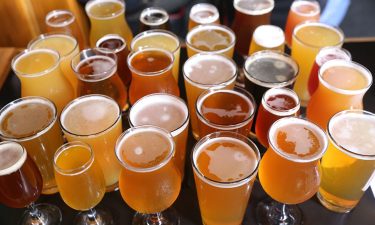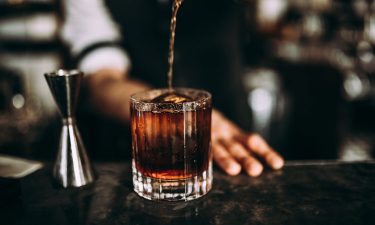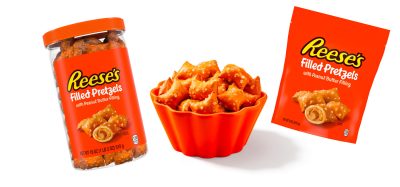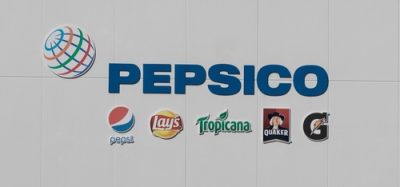How ‘craft’ is driving key trends in the alcoholic drinks market
- Like
- Digg
- Del
- Tumblr
- VKontakte
- Buffer
- Love This
- Odnoklassniki
- Meneame
- Blogger
- Amazon
- Yahoo Mail
- Gmail
- AOL
- Newsvine
- HackerNews
- Evernote
- MySpace
- Mail.ru
- Viadeo
- Line
- Comments
- Yummly
- SMS
- Viber
- Telegram
- Subscribe
- Skype
- Facebook Messenger
- Kakao
- LiveJournal
- Yammer
- Edgar
- Fintel
- Mix
- Instapaper
- Copy Link
Posted: 7 August 2019 | Matt Dunn - co-founder of Cadello | No comments yet
We discuss some of the key trends impacting the current alcoholic market sector, including the increasing popularity of craft and luxury drinks, as well as the appeal of homebrewing.


It’s no secret that quality has become the key trend in the food and beverage sector over the past 15 years or so. In this time, the major growth areas have been for premium products catering to niche segments, from additive-free pork scratchings to water-infused with botanical extracts. Alcoholic drinks are no exception. Starting with the craft beer revolution, many spirit categories, such a gin and rum, are also now looking to improve the quality and craftsmanship of their drinks. What’s more, entirely new categories of alcoholic beverages are popping up, catering to new and evolving tastes.
Here are five ways the focus on quality is driving key trends in the alcoholic drinks market…
Customers expect something new


Craft beer looks set to stay.
The incredible growth of craft beer looks set to stay for the foreseeable future. According to LEK Consulting, the value of the US craft spirits market has grown by approximately 20 percent per year since 2012 and is forecast to grow by approximately 15-20 percent per year through 2022.
This new wave of craft beer has triggered a focus on quality in the spirits industry. Gin, in particular, has seen enormous growth, led by brands such as Hendricks, Gin Mare and Monkey 47.
We are now seeing all types of craft spirits on shelves everywhere, with wide-ranging experimentation with different flavours, ingredients and botanicals to make the variety of offerings even broader. Consumers now want and expect to try something completely new every time they walk into a bar or restaurant. It has become a critical part of the appeal and experience of dining or drinking out.
Typically, to be successful, craft spirits have started out selling to a small number of high-end bars in cities, before expanding internationally into drinks venues of all kinds and launching into supermarkets.
Distillers are ever-more challenged to find ways to continue to diversify their offerings, including providing exclusive and limited small-batch products, to keep things interesting.
Cocktails make a comeback
The growth of cocktail culture has also propelled the popularity of craft spirits and higher quality product offerings. In sync with the improved trends in restaurants, bartenders have dramatically improved the cocktail experience.
Both classics and amazing new creations are now appearing on menus at over 70 percent of bars and restaurants in the UK. CGA’s Mixed Drinks Report shows that the value of on-trade cocktail sales jumped by 7.5 percent year-on-year in the first quarter of 2018.
There are a number of drivers behind this: the desire for differentiation, for the Insta-worthy drink to share on social media, and the trend towards luxury and indulgence.
New spirit categories emerge


An increase in boundary-breaking spirits has been forecasted, with luxury brands specifically beginning to appeal to consumers.
The Spirits Business, in its 2019 spirit trends forecast, predicted an increase in boundary-breaking categories – including crossovers, cask experimentation, distillation techniques and botanicals. As consumers seek differentiation, traditional categories are becoming more and more saturated, particularly with the rise of small-batch distillers.
Going forward, innovation in the industry will start to come from products that define new categories of their own. There have already been some interesting breakthroughs in the creation of new categories. One example is Italicus, an Italian liqueur that has also seen rapid growth since it launched two years ago. Another is Cadello, a unique liquor that blends eight ingredients, including star anise, mint, hazelnut and coffee.
These brand-new luxury players in the market are appealing to the rising demand for something new, unique and high quality. Alcoholic drinks manufacturers need to start thinking outside the limitations of traditional drinks categories in the hunt for something new, unique and exciting if they are to stay relevant.
Less is more


Millennials are driving the trend for high-quality spirits
Quality has taken over from quantity. People want to drink less alcohol but still get a buzz from the enjoyment of their drinks. This, coupled with a cautious return to spending, means consumers are willing to spend a little more on a reasonable volume of higher quality alcoholic beverages.
Premium and luxury spirits are going to be major growth areas in the spirits market, with millennials driving the trend. Millennials comprise 32 percent of spirit consumption by value, even though they comprise only 29 percent of the total drinking population. Between 2012 and 2017, the super-premium spirits and high-end premium spirits segments grew 6-7 percent per year by volume. CGA also calculated that 43 percent of consumers select high-quality drinks. This increases to 54 percent among 18-34-year-olds.
In response to this changing trend, brands have switched their focus to higher and higher quality and differentiation, particularly in mature markets. Pricing strategies also need to reflect this change, ensuring that, despite less alcohol being purchased and drunk, revenues are still looking healthy.
Homebrew experimentation
We’ve already touched upon some of the trends affecting the consumption of alcohol at bars and restaurants, but there are other changes affecting our relationship with alcoholic drinks.
After many years of rising prices and stagnant wages, a lot of people are choosing to enjoy the highest quality drinks at home, without paying the additional markup to go to a fancy bar.
The increase in the availability of homebrew and botanical kits, consumers are doing more to discover what flavours they like and educate themselves on complementary ingredients and mixers.
As you can see, the key trends for the food and beverage industry will all revolve around ‘craft’, with alcoholic drinks being perhaps the most affected. Customers continue to search out fresh, original flavours and premium quality, whether in their glass, cocktail or fridge.
This gives challenger brands a unique opportunity to gain a foothold in a long-established market, playing on the same level as household names. The key is to do something different, exciting and original.
About the author
Matt Dunn is co-founder of Cadello, a new, category-defining spirit produced by a 150-year-old family-owned distillery in Italy.
References
- Top 10 Trends Affecting the Spirits Industry | L.E.K. Consulting [Internet]. Lek.com. 2019 [cited 2 August 2019]. Available from: https://www.lek.com/insights/ei/top-10-trends-affecting-spirits-industry.
- Cocktail sales continue to soar as new trends emerge – CGA [Internet]. CGA. 2019 [cited 2 August 2019]. Available from: https://www.cga.co.uk/2018/04/26/cocktail-sales-continue-to-soar-as-new-trends-emerge/.
- The spirits trends to watch in 2019 [Internet]. Thespiritsbusiness.com. 2019 [cited 2 August 2019]. Available from: https://www.thespiritsbusiness.com/2019/01/the-spirits-trends-to-watch-in-2019/.
- Cocktail sales continue to soar as new trends emerge – CGA [Internet]. CGA. 2019 [cited 2 August 2019]. Available from: https://www.cga.co.uk/2018/04/26/cocktail-sales-continue-to-soar-as-new-trends-emerge/.








